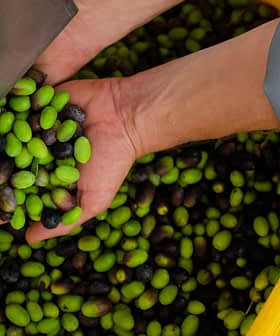Which olive oil farms are thriving and which ones are diving — and why — is the focus of a new European Commission report.
Covering the three main EU producers — Spain, Italy, and Greece — the “EU olive farms report” analyses trends in cost, margin and farm income in the decade to 2010.
The short answer is that income has been on a more or less drastic decreasing trend everywhere except Extremadura and Sicily. Not only that but the average income of olive oil farms is significantly lower than the average for all farms.
The average income of Spanish and Italian olive oil farms is about €12,000 – 13,000 ($14,800 – 16,000) per work unit (equivalent to one person working full-time on the holding) per year and about €7,000 ($8600) in Greece, the report says.
But it found some big discrepancies. From 2006 – 2009, a quarter of all Spanish farms earned less than €5,000 ($6,170) per family work unit yet 11 percent of those dedicated to olive oil production earned more than €30,000 ($37,000).
“High income is linked to large olive groves, a low share of family labor in total labor, higher direct payments (EU income support) and above all, high labor productivity. In Italy, it is also related to better yields and in Greece to better yields and higher prices.”
“Low income is linked to the opposite characteristics: small size, high share of family labor, lower direct payments and low labor productivity.”
“Overall, the economic situation of olive oil farms has deteriorated significantly over the period studied,” the report says.
Family labor a major outlay
Labor is the most important cost item in olive oil farm production: family labor represents 43 – 57 percent of total costs and wages 10 – 17 percent.
Farms tend to be bigger in Spain, with an average of 12ha of olive groves, against 3ha in Greece and 3 – 5ha in Italy. The yield is better in Italy, but labor productivity is higher in Spain. In Greece, where farms are very small, family labor input is very high.
“Overall, the economic situation of olive oil farms has deteriorated significantly over the period studied,” the report says.
Spain
Spain’s olive oil farms enjoy higher labor productivity. They produce olives which are processed by other operators, the report says.
But of all types of farms, they were the worst hit in terms of income drop, seeing about a third of their income evaporate while the average for all farms grew 9 percent.
“This was because labor productivity did not improve, the average farm size did not change, and because prices and direct payments (EU income support) went down.”
Italy
“Prices for olives and oil are on average significantly higher in Italy. Costs are also higher, but the higher price on average more than compensates for costs, so that margins are in general higher. Only the net economic margin of Italian producers of olives for oil is lower, due to their very high family labor costs.”
In terms of regional differences, Calabria’s olive oil farms achieved the best average income — despite lower prices — thanks to higher yields, a lower share of family labor, and better family labor productivity. But in the last thee years surveyed, Sicily’s income trends were more positive.
Greece
Margins and incomes slid in Greece from 2005 to 2009, driven by trends in price, labor productivity and cost per ton.
Regionally, Ipiros-Peloponissos-Nissi Ioniou tended to fare worse in terms of income while those in Sterea Ellas-Nissi Egaeou-Kriti were more robust.
“Worryingly, the share of farms which do not generate income from farming rose over the period, and more particularly since 2005” the report says.
The report classified olive oil farms into three types according to the type of product they delivered: olives for oil, olive oil itself, or a mix of both. In Spain there are mainly olive producers, in Greece mainly olive oil producers and in Italy, there are both as well as mixed producers.









